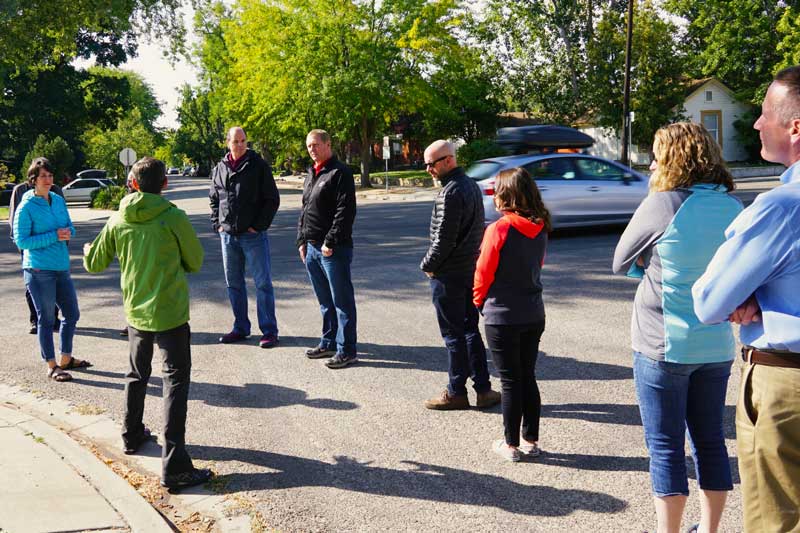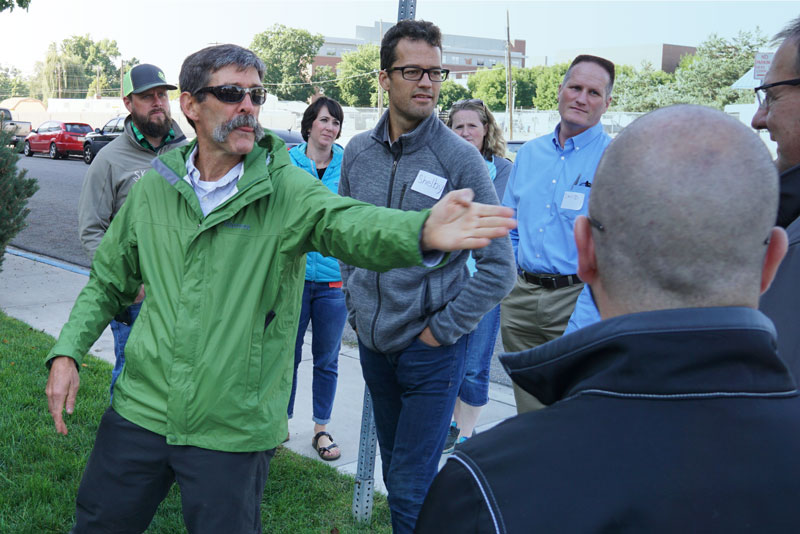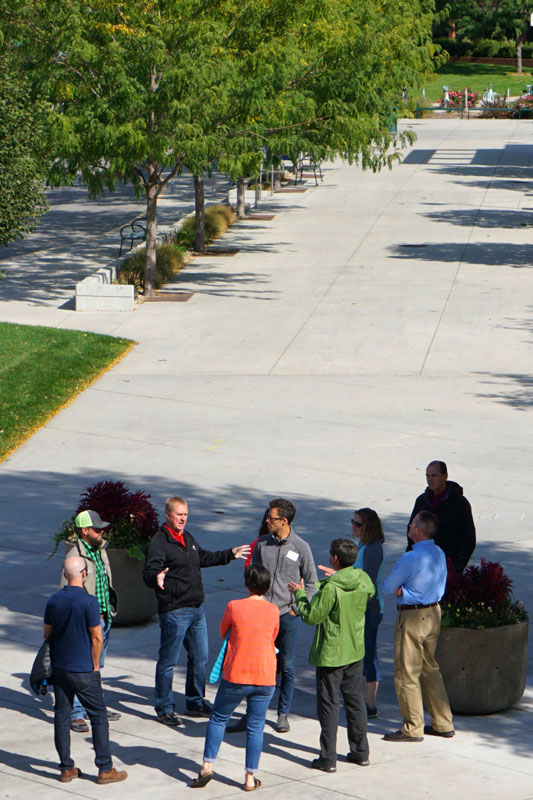Some things you can learn from a book. Other things are best experienced first-hand.
For participants in the 2017-2018 Community Health Champions Learning Collaborative, that meant a bit of class time before hitting the streets around Boise State University to participate in a “walking audit” of the area.
Community Health Champions is a new initiative created and run by High Five, powered by the Blue Cross of Idaho Foundation for Health. It brings mayors and other city staff together to explore how they can reduce childhood obesity in their community.


After a brief welcome from innovation expert Gordon Jones, Dean of Boise State University’s groundbreaking College of Innovation and Design, this year’s fall session included workshops by two nationally-recognized experts, Mark Winne and Mark Fenton. The workshops focused on environmental and policy changes that can occur in a city to address access to healthy foods and increase physical activity.
While the “class time” provided great opportunities to cement relationships, share local challenges and opportunities, and understand the data driving Community Health Champions, the walking audit provided a unique opportunity to apply this learning to the real world.
The goal of a walking audit is to bring together an interdisciplinary group of community stakeholders to walk a defined area, examine its deficiencies and potential, and discuss practical ways it could be improved.
In the case of the Community Health Champions walking audit, the goal was to teach the mayors and other participants how they could conduct an audit in their communities and identify changes they could make in their community that would help get children physically active. The group spent a bit more than an hour walking the campus and the area just beyond it. Occasional stops allowed our guide, Mark Fenton — a huge walking audit evangelist with experience leading hundreds of such audits across the country — to poll participants, educate them on various aspects of walkability, and challenge them to apply this learning to their own cities.

The group even stepped off the sidewalk to form a human “curb extension” (also called a bulb-out) to get a feel for the impact such engineering solutions can make — and brainstorm inexpensive ways they could test such traffic calming features in their own community.
Overall, it was a great two-day event and a successful session for this year’s Community Health Champions participants. We are very excited to see how the session learnings will be applied in each community.
While this program is currently at capacity, High Five powered by Blue Cross of Idaho Foundation for Health will be accepting new participants next year. To learn more, please sign up for our newsletter or contact us with any questions.
